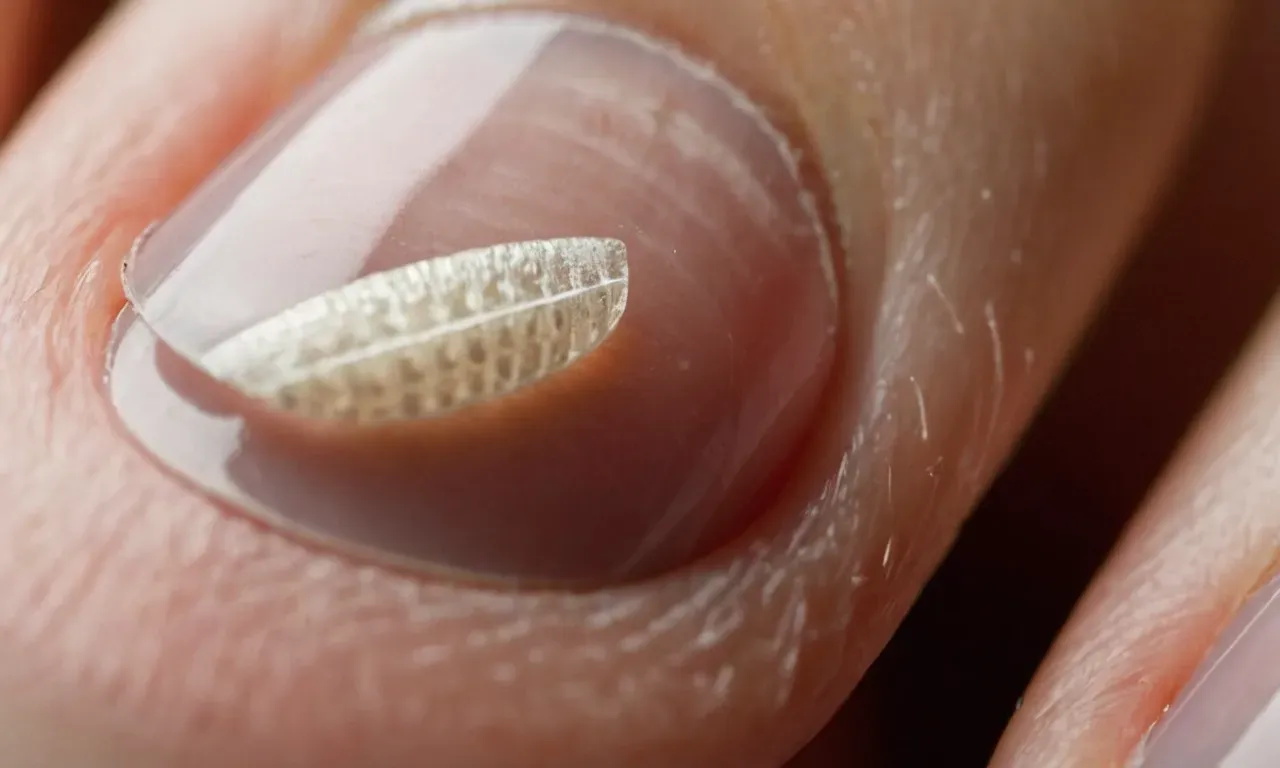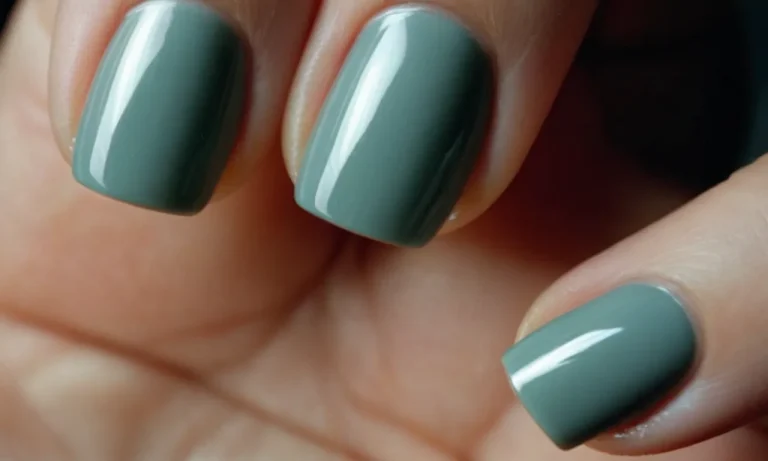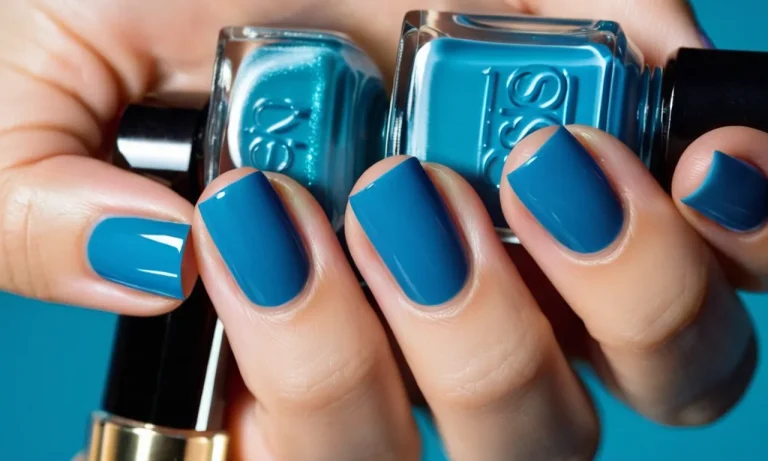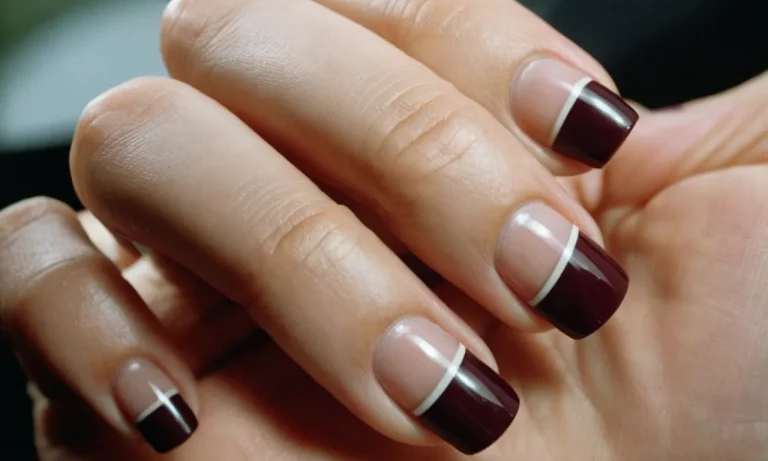Why Is My Toenail Lifting? Causes And Treatments
If you’ve noticed that one of your toenails seems to be lifting up from the nail bed, you’re not alone. A lifted toenail can cause pain and discomfort, not to mention look a little strange.
If you’re short on time, here’s a quick answer to your question: A toenail can lift up due to trauma, fungal infections, psoriasis, reactive arthritis, skin cancer or other underlying medical conditions.
Mild cases can be treated at home with moisturizer and trimming, but severe cases may require medical intervention.
In this comprehensive article, we’ll explore all of the possible causes of a lifted toenail, when you need to see a doctor, and the best at-home remedies and medical treatments available.
What Does a Lifting Toenail Look Like?
Early Signs
In the early stages of a lifting toenail, you may notice some subtle changes in the appearance of your nail. Here are some of the early signs to look out for:
- The nail begins to lift away from the nail bed – you may see a small gap between the nail and skin underneath.
- The color of the nail changes – it may look yellowish, opaque or discolored.
- The texture of the nail changes – it may develop ridges or grooves.
- The nail becomes thicker or develops a distorted shape.
- There is tenderness or pain when pressure is applied to the nail.
These early changes often begin at the tip or sides of the nail and then spread. You may also notice some redness or swelling of the skin around the nail. As the problem progresses, the lifted part of the nail can catch on socks or snag on bed sheets.
While not particularly dangerous at this stage, a lifting toenail can cause discomfort. Seeking treatment early on can help prevent more severe lifting and potential infection.
Severe Cases
Over time, if left untreated, a lifting toenail can become a severe problem. Here is what to expect as the condition advances:
- The nail lifts even further away from the nail bed, leaving a larger gap.
- The detached part of the nail may turn opaque, thickened and crumbly.
- Debris and dirt collect in the space underneath the lifted nail.
- The skin around the nail becomes red, painful and swollen – symptoms of infection.
- Pus may be visible around or under the nail.
- A foul odor is noticeable coming from the nail.
- Walking becomes increasingly painful as pressure is put on the affected toe.
In severe cases, the nail can lift all the way back and completely detach from the nail bed. The underlying skin may be left raw and vulnerable to bacteria. Treating the infection is crucial to prevent cellulitis, a potentially serious skin infection.
Leaving an advanced lifting toenail untreated can result in chronic pain, impaired mobility and ongoing nail problems. Seeing a podiatrist right away is recommended.
What Causes a Toenail to Lift From the Nail Bed?
Trauma
Injury or trauma to the toenail or toe can cause the nail to separate and lift away from the nail bed. This includes stubbing your toe, dropping something on your toe, tight shoes causing pressure damage, and ingrown toenails.
The trauma damages the nail matrix (where the nail grows from) or nail bed, leading to abnormal nail growth and lifting.
Fungal Infection
A fungal nail infection (onychomycosis) is another common cause of nail lifting. The fungi feed on keratin, gradually destroying the nail. As the infection progresses, the nail can become discolored, thick or brittle, and start to lift away.
Fungal infections account for around 50% of toenail lifting cases.
Psoriasis
Skin conditions like psoriasis and eczema can also lead to nail changes. Up to 50% of people with psoriasis get psoriatic nail disease, causing pitting, crumbling and lifting of the nail. It creates an abnormal nail matrix, so the nail does not attach properly as it grows out.
Reactive Arthritis
Reactive arthritis is joint inflammation following certain bacterial infections. Around 2-26% of reactive arthritis cases involve the toenails. It causes pain, swelling and eventual lifting and shedding of the nail.
Skin Cancer
While rare, nail melanoma (a serious skin cancer) can also lift nails off the nail bed. Early changes to look for are nail fractures, dark streaks in the nail, and areas of pigmentation. As it advances, the nail can detach and thicken.
Other Causes
Other less common causes of nail lifting include:
- Thyroid disease
- Vitamin or nutrient deficiencies
- Nail disorders present at birth
- Side effects of medications
- Aging
Sometimes, nails lift without an obvious cause. It’s important to consult your doctor if the lifting is significant or causes pain. Leaving nail lifting untreated risks more serious infection entering the space between nail and nail bed.
When to See a Doctor About a Lifting Toenail
A lifting toenail can be uncomfortable and even painful. But when is it time to see a doctor? Here are some guidelines on when to seek professional medical care for a lifting toenail:
Signs of Infection
If the area under or around the lifted nail becomes red, swollen, and tender, it could signal an infection. Other symptoms of an infected nail include:
- Pus or discharge coming from the nail
- A foul odor
- Fevers or chills
Infections require prescription antibiotic treatment from a doctor to clear up. Left untreated, the infection can spread and possibly lead to loss of the nail.
Diabetes Risk
Frequent nail lifting can be a sign of diabetes. High blood sugar levels in those with diabetes can damage blood vessels and nerves in the toes and feet. This disruption in circulation can cause nails to separate from the nail bed.
Anyone noticing recurring toenail lifting should get tested for diabetes, especially if they have other risk factors like being overweight or having a family history of diabetes.
Injury to the Nail
Trauma like dropping something on your toe or stubbing it can cause a hematoma (blood blister) to form under the nail. Large hematomas put pressure on the nail, causing it to lift away from the bed.
See a doctor if the hematoma is large or very painful. They may drain the area to relieve pressure on the toenail and reduce pain.
Nail Abnormalities or Disorders
Changes in nail color or texture along with detachment from the nail bed could indicate a more serious underlying nail condition. These include:
- Fungal infections
- Psoriasis
- Lichen planus
- Skin cancer
A dermatologist can examine the nail and surrounding skin for signs of these disorders. Early diagnosis and treatment can help resolve these problems before lasting damage to the nail occurs.
Persistent Pain
A lifted nail that causes constant discomfort or interferes with daily activities warrants medical care. The doctor can trim and smooth the detached part of the nail. They may also suggest adhesive bandages or dental cement to secure the nail in place while it grows out.
Severe cases that are very painful or interfere with walking may require partial nail removal. This provides relief while the nail regrows in a normal pattern.
Home Treatments for Lifting Toenails
Moisturize the Nail
Keeping the toenail and surrounding skin moisturized can help prevent further lifting or cracking. Apply a moisturizer like petroleum jelly, mineral oil, or hypoallergenic hand cream 1-2 times per day, gently massaging it into the nail, nail bed, and skin around the toes.
The moisturizer helps retain moisture and flexibility in the nail.
Carefully Trim the Nail
Gently filing or trimming the lifted part of the nail can help reduce snagging and further lifting. Use an emery board or nail file to carefully smooth rough edges or catchy areas on the nail. Trim hanging nails back to where they are still attached.
Be very gentle, stopping if there is any pain or bleeding which could worsen inflammation.
According to the American Academy of Dermatology (AAD), proper toenail trimming technique is important for preventing ingrown toenails. The AAD recommends cutting toenails straight across and avoiding rounding off the edges or digging into corners.
Protect the Nail
Protecting the lifted nail from further trauma can encourage healing and reattachment to the nail bed. Bandages, tape, or small foam pads placed over the nail cushion it from friction inside shoes. Change bandages daily to keep the area clean.
Wearing clean, well-fitted shoes and socks that minimize pressure on affected toes also helps decrease irritation. Using shoe inserts provides additional cushioning and support for sensitive nails.
If pain persists despite home treatment, see a podiatrist or dermatologist to treat the underlying cause. In rare cases, a severely lifted nail may need to be removed surgically so a new nail can grow in properly attached.
| 85% | Portion of lifted toenails caused by trauma, injury or improper trimming per American Academy of Dermatology |
| 6 months | Average time for a toenail to fully regrow after removal per Medical News Today |
Medical Treatments for Lifting Toenails
Medications
There are several medications that may be prescribed to treat lifting toenails (onycholysis). Oral antifungal medications like terbinafine or itraconazole are often the first line of defense if a fungal infection is the underlying cause of the nail lifting.
These medications work to clear the infection so the nail can reattach to the nail bed. Antibiotics may also be prescribed if there is a bacterial infection present.
Corticosteroid creams or injections can also reduce inflammation and pain associated with onycholysis. These may be used along with antifungal or antibacterial medications to provide symptomatic relief while treating the root cause of the nail lifting.
Minor Procedures
If medications are not effective at reattaching the lifted part of the nail, a doctor may perform minor procedures to remove and treat the affected nail area. These include:
After nail removal and/or chemical cauterization, the doctor may prescribe topical or oral medication to prevent infection as the nail regrows attached to the nail bed.
Surgery
If more conservative treatments fail and the onchyolysis is severe or keeps recurring, surgical options may be considered. These include:
| Partial nail removal (onychectomy) | Removing the detached part of the nail along with the nail matrix to prevent that portion from regrowing. |
| Complete nail removal | Removing the entire nail, often as a last resort for chronic severe cases of onycholysis. |
As with other procedures, medication is typically prescribed after surgery to prevent infection as the nail regrows. Most cases of nail lifting do not require these aggressive surgical interventions. But they remain an option for severe, recurrent cases.
Research shows that up to 10% of adults may experience lifting toenails at some point (source). With appropriate treatment guided by a podiatrist or dermatologist, nail lifting often resolves without surgery.
Prevention through prompt treatment of underlying causes like fungal infections reduces recurrence.
How to Prevent Your Toenails From Lifting
Wear Properly Fitting Shoes
One of the most common causes of toenails lifting is wearing shoes that are too tight or too small. When your toes are constantly rubbing against the front of your shoes, it puts pressure on the toenails and can cause them to separate from the nail bed.
To prevent this, make sure to wear shoes that fit properly and allow enough room for your toes to move comfortably. Avoid high heels and pointed toe styles which cram your feet into a narrow space. When trying on shoes, walk around the store to ensure there is no pinching or rubbing on your toes.
Also try on shoes at the end of the day when your feet are naturally a bit more swollen. Having properly fitted shoes will help keep your toenails in place and reduce the risk of lifting.
Trim Toenails Correctly
Improper toenail trimming can also lead to nails becoming detached from the bed. When trimming your nails, be sure to cut them straight across and never round off the edges. Rounding the edges creates pressure points on the corners of the nails.
This constant stress as you walk eventually causes the nails to separate and lift upwards. Use sharp nail clippers and trim the nails so they are even with the tip of the toe. File off any sharp edges carefully to smooth them.
Leaving some white space at the tip of the nail is also important to avoid ingrown toenails. Cutting into the corners or trimming too short are open invitations for lifting nails.
Practice Good Foot Hygiene
Keeping your feet clean and dry can help prevent toenail issues. Get into the habit of washing your feet daily with mild soap and water, being sure to dry thoroughly, especially between the toes. Change your socks frequently and choose breathable cotton or wool socks to avoid excess moisture.
Rotating pairs of shoes and allowing them a day to fully dry out is also beneficial. Fungal infections thrive in dark, damp environments like the insides of closed up shoes. By promoting a clean, dry foot environment, you lower your risk of fungal infections which can potentially cause lifting nails.
Moisturize Your Feet
Using moisturizer on your feet helps keep nails flexible and less prone to becoming rigid and detached. Look for a thick, nourishing foot cream and apply it all over your feet, including rubbing it into the nails, at least a couple times per week.
The increased hydration keeps nails from becoming brittle and cracking. For especially dry, cracked feet you can apply moisturizer and even layer petroleum jelly onto the nail beds before bed and then wear cotton socks overnight.
The moisture boost can rehydrate parched nails and get them back into optimal shape. Be sure to also drink plenty of water to hydrate from the inside out. Proper lubrication and moisture content are key to keeping nails firmly anchored.
Conclusion
A lifting toenail can be caused by many different factors, ranging from simple trauma to serious medical conditions. While mild cases can be cared for at home, it’s important to see a podiatrist if the nail continues to lift, to rule out any underlying problems.
With proper treatment and preventative care, you can get your lifting toenail back to normal. Just be patient during the process and take steps to keep your feet healthy overall.







